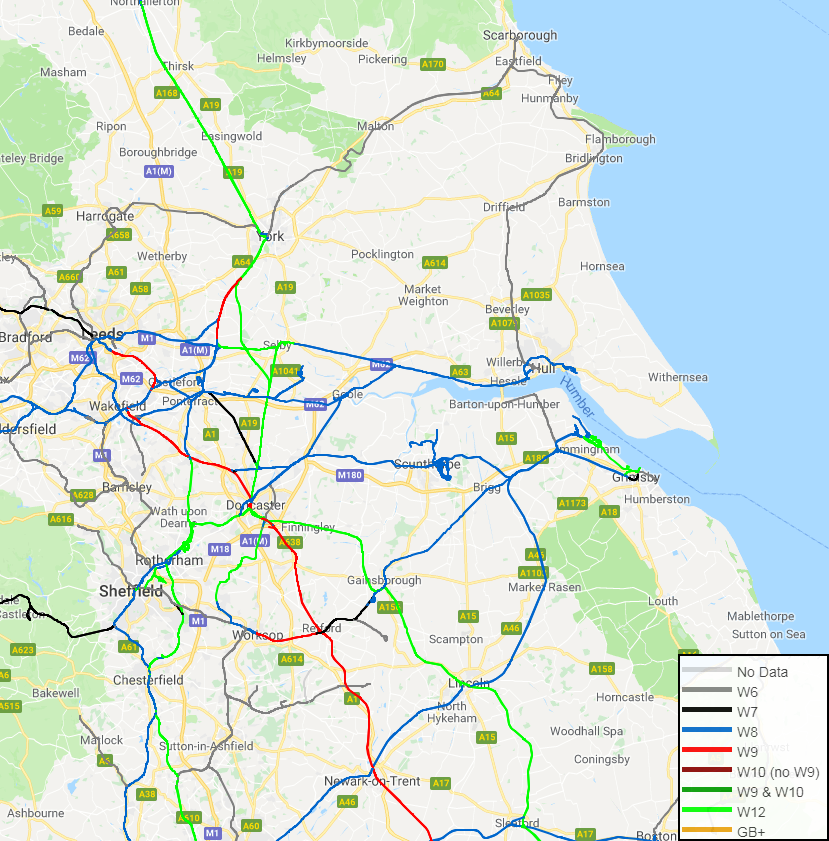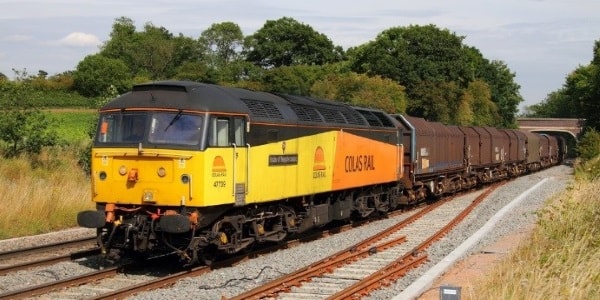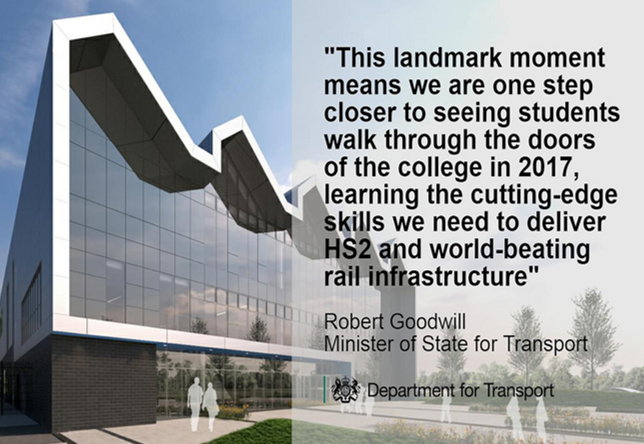Do you think there is some data we are missing or do you have data you would like to present?
If so contact Nick Richards at: N.Richards@hull.ac.uk
Start:
Finish:
Select a start and finish point from the map
Rail
In the Humber region rail is a vital element of moving both people and freight in and out of the region. Many of the cities in the region like Hull have major railway stations which have good connectivity with the rest of the UK. For freight many of the ports and logistical assets around the Humber have good access to the rail network so they can move freight in and out of the UK.
For moving people, there are a number of companies for example Hull Trains and Transpennine Express which operate services all over the country and into a number of major cities like London from the area.
For the network around the Humber there are about 250 rail freight movements a week, which is over 25% of the overall rail freight traffic in the UK. There are a number of rail freight operators which operate in the Humber region such as Freightliner who have a major depot at Doncaster and they operate a number of daily services through the region.
The Humber LEP, North Lincolnshire Council and Network Rail have come together to carry out a project to increase the number of freight trains being able to access the ports of Killingholme and Immingham. The project is to enhance the gauge of the existing infrastructure from Doncaster to Immingham. The project will include bridge reconstruction, track lowering, platform reconfiguration and signal relocation. The project is due to be completed by around 2020. The aim of the project is to enable ‘high cube’ containers to be transported to and from the ports of Immingham and Killingholme because, at present, only standard containers can be carried on the line. This will, hopefully, lead to more freight coming into the Humber ports either as import or export containers.
Siemens have announced plans to build their new train factory in Goole; for more information, see ‘Siemens Train Manufacturing’ below.
The map shows the type of freight that each line can carry. The freight is broken down into 10 different categories which have their own colour to indicate what line they go on.
Download
The Proposed High Speed Rail Routes
The HS (High Speed Rail) project is split into multiple phases. The first phase is HS2 and this is the route between central London and Birmingham. The route has already been announced and confirmed. Purchasing of the land which is required for the line has already started.
The second phase of the roll out of high speed rail in the UK is HS2A & HS2B. HS2A is the line is between Birmingham, Manchester, Liverpool and ending in Crewe. The HS2B is the line from Birmingham up through the East Midlands, South Yorkshire and into Leeds City centre.
The latest information is construction of phase 1 will start some time in 2017 and will be operational by 2026. The second phase will be operational by 2033 and in May 2016 the cost of the whole project stood at £42.6bn but it has been argued that the final cost of the project will be much higher. This is due to changes in the final route and how the line will be constructed for example the need for more tunnelling. The trains which will operate on the High Speed rail lines will be able to seat as many as 1,100 passengers and will travel at up to 250mph which is higher than any high speed rail in Europe.
How will it affect the Humber Region?
Currently with HS2 being in the final planning stages and the proposed routes of HS2A and HS2B only being announced at the end of 2016 it is hard to give any firm expectations of what the project might mean to the Humber Region. The Humber Region is more likely to feel any impact from HS2B rather than the other two due to it passing through Leeds and the South of the region. Although there are no firm estimates on what HS2B might bring to the region, the possibility of cutting down the time it takes to travel to Birmingham and London it is highly likely that it will give an economic boost to the region. This is likely to be because businesses are more likely to locate in the North rather than the South because the travel time between the capital and the North will be greatly reduced.
HS3
HS3 is a proposed high speed rail link over the Pennines between Liverpool and Hull. The route would go through Manchester, Leeds and Sheffield. It has been suggested that if the proposal was made a reality it would reduce the journey time of about an hour to 26 minutes between Manchester and Leeds. This will hopefully increase business between the cities in the North and hopefully aid in rebalancing the UK economy. Also, by going through Manchester and Leeds, it will connect to the proposed HS2A and HS2B lines which will allow access to Birmingham and London. It has been suggested that the HS3 rail link would generate an additional 850,000 jobs by 2050.
National College for High Speed Rail
As the UK starts to introduce High Speed Rail into the rail network, there is a growing need for highly skilled personnel to build, operate and maintain high speed rail. To create the skilled people to do this, the National College for High Speed Rail has been set up. The College is located on 2 sites, one in Birmingham and one in Doncaster.
The site in Doncaster is located on Lakeside and will have 76,000 sq ft of space for teaching, workshops and specialist rail equipment, such as 150m of external track to help train engineers for the sector. Along with Birmingham, Doncaster will train thousands of engineers for the needs of HS2 and the wider rail sector. At the Doncaster site a new £25m State of the Art building will be home to the college when it opens in September 2017. The College will provide courses for over 1000 students aged 18 and above. Doncaster has always had a strong tie with the rail industry so it was the ideal location to put the College. Doncaster will focus and specialise in Traction, Rolling Stock and Advanced Technology.
The idea of the College is that it will:
- Develop the highly skilled workforce needed to make the HS2 project reality and the needs of the wider railway industry.
- Use an industry led curriculum in order to make sure graduates have the best possible employment prospects in the supply chain.
- Be a flagship for the rail workforce in terms of equality, diversity and inclusion
- Allow High Speed Rail to be at the cutting edge of innovation in science and technology.
Siemens Train Manufacturing Site
In early March 2018, Siemens announced an agreement to build a state-of-the-art manufacturing site to build and commission trains.
In June 2018, it was announced that Siemens Mobility had won the contract to manufacture and test 94 trains for the Piccadilly line of the London Underground. The contract is worth around £1.5bn and is the first contract to be awarded to the site in Goole. Manufacture of the trains will begin when the factory has been completed and it is hoped that the first train will be in service in 2023.
The location of the factory will be on a 67 acre site in Goole and the plant will take an investment of around £200 million. It is hoped is that construction will start later this year, now that a contract has been awarded. The development will be about the same size as 40 football pitches and the actual building will have a footprint of 75,000 square metres which is about the size of 10 football pitches
The factory should employ around 700 people in highly skilled engineering and manufacturing jobs and an extra 250 people will be employed during the construction phase. It is hoped that around 1700 indirect jobs will be created around the UK in the supply chain for the factory.
The development will add to Siemens presence in the Yorkshire & Humber region by joining the Siemens Gamesa wind turbine factory in Hull. The factory will be built and operated by Siemens Mobility which is a division of the main Siemens Group.
For more information you can view, see the press release from Siemens
Map of Rail Gauges
The map shows the gauges of all lines in and out of the Humber region. As the map shows, the type of gauge varies dependent on the location. This means that freight trains have to be carefully planned to get to the right destination. As the map shows, all the major ports on the Humber have a rail link to the main UK rail network. A gauge is dependent on a number of factors including track type, height clearance from bridges and what type of platforms are on that section of track. The track between Doncaster and Immingham is being upgraded to W12 and this should be completed by 2019. In the UK, any new railway lines will be built for W12 but any upgrading of track will have the aim of being W10 but W12 will be considered if possible.













